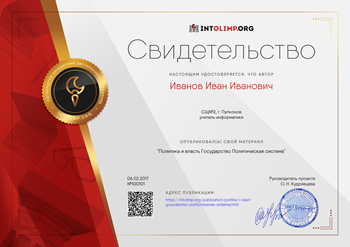№ ______ The Plan of the lesson.
| Group | Date |
|
|
|
Subject:
The theme: Kazakhstan is my motherland. Modal verbs and their equivalents.
The aims of the lesson:
1. Educational:
• To consolidate the words and grammar);
• to practice reading the text;
2. Developing:To develop the students’ habits of reading, writing and speaking;
3. Up-bringing: To bring up feeling of kindness respect-ness to the book, to the lesson and to the teacher.
The form of the lesson: traditional
The type of the lesson: mixed
The methods of the lesson: presentation, explanation, question-answer
The equipment of the lesson: 1. Visual aids: cards, pictures, slide
Inter-subject relation: Kazakh, russian
Language materials: 1. Grammar materials:
The stage of the lesson:
1. Introduction. 3 мин.
2. Checking -up the hometask.(17 мин)
3. Presentation. (20 мин)
4. Practise. (20 мин)
5. Production.(13 мин).
6. Conclusion. (5 мин)
7. Home work: ( 3мин)
Introduction.
Organization moment:
Good morning! How are you? Sit down.
Who is on duty today?
What day in a week today?
What date is it today?
Checking -up the hometask.
- What was your home task? Are you ready?
- Have you learnt the words?
Simple present with 'have' and 'be'
Fill in the correct form of the verbs.
We (to have)
 a nice garden.
a nice garden.She (to be)
 six years old.
six years old.Simon (to have)
 two rabbits and five goldfish.
two rabbits and five goldfish.I (to be)
 from Vienna, Austria.
from Vienna, Austria.They (to be)
 Sandy's parents.
Sandy's parents.
The procedure of the lesson:
T: Good morning dear friends! I’m glad to see you. How are you today? I think everything is well. Are you ready to start our lesson?
Boys and girls I want to ask you some questions.
- What country do you live in?
- Do you love our country?
- Where is Kazakhstan situated?
- What is the area of Kazakhstan?
- What is the population of Kazakhstan?
- What is the official name of Kazakhstan?
- Who is the president of Kazakhstan?
- Name the capital of Kazakhstan?
- What is the official language of Kazakhstan?
- Do you know Kazakhstan`s anthem?
- What national symbols of Kazakhstan?
The state flag.
The sun as the symbol of place is depicted against a blue background. You can see the Eagle the symbol of freedom under the sun. There is a traditional Kazakh ornaments on the left.
Байрақ.
Байрақтың ортасында көгілдір түс аясында бейбітшіліктің рәмізі – күн бейнеленген. Байрақтың төменгі жағында қыран бейнеленген. Сол жағында қазақтың дәстүрлі өрнегі бар.
T: I’m happy to hear these beautiful answers! It seems to me you must be real citizens of our independent Motherland. I want to address you with such words: beautiful and generous is our native land. Love, respect and take care of our country.
T: Good! For the beginning we are going to speak about Kazakhstan.
P1- The Republic of Kazakhstan is situated in Central Asia. The area of Kazakhstan is about 3 mln square km. It’s population is about 16 mln people. The population lives mostly in cities and towns.
P2- Kazakhstan Is an extremely beautiful country/ There are the majestic Zailiysky Alatau Mountains, the beautiful lakes and rivers: the Irttysh, the Syrdaria, and Amurdaria, Aral sea and Kaspian sea and the endless steppes.
P3- There are a lot of picturesque places like Kolzhai, Bayanaul and others. Borovoe – is one of the natural miracles of the planet.
P4- Kazakh is the official language of the country. Russian and other languages are spoken here too. Kazakhstan is multinational country.
P5- Kazakhstan borders China, Russian Federation, Turkmenistan, Uzbekistan and Kyrgyzia. There is a long border cost line on the Caspian sea. There are a few rivers and lakes in Kazakhstan.
P6- The flora and fauna of the country are different. They depend on the climate of the country. They are richer in the south and poorer in the north. The climate of Kazakhstan is strongly continental. It is cold in winter and hot in summer.
P7- There are many big cities and small towns in the Republic. The largest cities of Kazakhstan Are Almaty, Karaganda, Shimkent, Astana…..
3. Presentation of the words. Here are some new words for you to remember. Listen and read after me:
an anthem - әнұран
a coat of arms - елтаңба
a law - заң
intention –мақсат
Currency – валюта
Prosperity - гүлдену
Council – кеңес
The Supreme Court – жоғарғы сот
State – мемлекет
Grammar: К модальным глаголам (modal verbs) в английском языке относятся следующие глаголы: can (could), may (might), ought to, must, need. Глаголы to be, to have, will, would, shall, should могут употребляться и как вспомогательные глаголы и как модальные глаголы (имея модальное значение и выражая необходимость, желание, намерение совершить действие).
Употребление модальных глаголов
1. Модальные глаголы употребляются для выражения возможности, готовности, вероятности, способности, обязанности, долга, обязательства, уверенности, разрешения совершить действие, желания.
Примеры:
Can I go to the cinema? – Могу я пойти в кино? (способность);
It may rain today. Сегодня может пойти дождь. (вероятность);
You must be tired. Ты, должно быть, устал. (уверенность);
I would like to see her father. – Мне хотелось бы увидеть ее отца. (желание);
2. Модальные глаголы не употребляются самостоятельно, а только в сочетании с инфинитивом другого глагола без частицы to.
Образование
1. Модальные глаголы являются недостаточными глаголами (defective verbs), так как не имеют всех форм, которые имеют другие глаголы. Например, глаголы may и can имеют форму настоящего и прошедшего времени, а форму будущего времени не имеют.
2. Модальные глаголы имеют одну форму для всех лиц и чисел. В третьем лице единственного числа отсутствует окончание –s.
Примеры:
She can read. – Она умеет читать.
He will come here. – Он придет сюда.
3. После всех модальных глаголов инфинитив употребляется без частицы to.
Исключение – to be/to have в модальном значении, и модальный глагол ought, после которых всегда употребляется инфинитив с частицей to.
Примеры:
I must hurry. – Я должен торопиться.
She ought to get married. – Ей давно пора замуж.
I have to return him a passport. – Я должен вернуть ему паспорт.
4. Утвердительное предложение образуется с помощью модального глагола, расположенного между подлежащим и смысловым глаголом.
Примеры:
You should go. – Вам следует идти.
They ought not to drink so much. – Тебе не следует пить так много.
5. Отрицание образуется при помощи добавления not/n’t к модальному глаголу.
Примеры:
You should do like this. – Тебе следует так сделать. You should not do like this. –Тебе не следует так делать.
I can wait. – Я могу подождать. I can’t wait. – Я не могу ждать.
6. Вопросы образуются при помощи изменения порядка следования подлежащего и модального глагола. Вспомогательный глагол to do не используется.
Примеры:
You can speak English. – Ты можешь говорить по-английски.
Can you speak English? – Ты можешь говорить по-английски?
7. В разговорной речи в английском языке часто употребляются сокращения модальных глаголов.
can not = can’t
could not = couldn’t
may not = mayn’t
might not = mightn’t
must not =mustn’t
need not = needn’t
ought not = oughtn’t
shall = ‘ll
shall not = shan’t
will = ‘ll
will not = won’t
would = ‘d
would not = wouldn’t
IV. Working with the text.
Astana is the capital of Kazakhstan
Astana (the former Akmola) was founded in 1830. In 1862 stanitsa Akmola got the status of a town. In March 1917 the Soviet Power was established in Akmola. In 1961 Akmola was renamed into Tselinograd and became the centre of Tselinny Krai.In 1992 the city got its name Akmola again and since October 1997 Akmola has become a new capital of the Republic of Kazakhstan. Later on it got its present name Astana.
Astana is the capital of Kazakhstan. It occupies the north-western part of the Sary Arka, on the river Ishim. The climate is extreme continental and drought- prone. The scorching summers bring dust storms and hot, dry winds. Astana is a modern growing city, a political, financial, economic, scientific and socio-cultural centre of the state. In 1999 Astana was awarded with the medal and little of City of Peace by UNESCO
There are a lot of magnificent beautiful buildings, higher educational establishments, colleges and secondary schools, hotels, banks and other commercial structures in Astana, the new capital of the Republic of Kazakhstan. There are many places of interest in Astana: the Central Square the Republic Avenue, the Palace of Youth and the Bridge across the Ishim River, the Reginal Museum of Fine Arts and others. From everywhere you can see Baiterek, the symbol of prosperity and happiness.
The Baiterek Tower has become the city's symbol and its visiting card. The height of the structure is 105 meters. At the height of 97 meters there is an observation deck providing a bird's eye view of the city. The figure of 97 was not chosen at random. It symbolizes the year of the movement of the capital from Almaty to Astana. The Baiterek Tower accommodates an art gallery, a large aquarium and a restaurant.
Three group prepare the poster about the capital of Kazakhstan.
c). Match the word and the definition.
1.Constitution a). is a group of people who are elected to govern a country or a city.
2.Council b). is the main law of the country.
3.President c). is the lower House of Kazakhstan Parliament.
4.Senate d). is the leader of the republic.
5.Majilis e). is the upper House of Kazakhstan Parliament.
6.A senator f). is a member of the law-making senate.
7.The Supreme Court g). is an occasion when all the people of the country can vote on an important issue (question).
8.Referendum h). is the place where legal trials take place and where crimes are judged.
The keys: 1b; 2a; 3 d; 4 e; 5 c; 6 f; 7 h; 8 g.
VI.Practise.
- Look at ex: 1.
a) Today we shall go Astana. We are speaking about Astana.
- Have you been Astana?
- Where is Astana?
-What about Astana do you know?
Astana is a young city. There are many modern buildings in Astana. They are “Baiterek”, “The house of Parliament”, “Khan Shatyr”, “Duman”, The President’s residence and many green parks. There are universities, colleges and secondary schools, gymnasiums in our capital.
-Have you been “Khan Shatyr”?
- Have you seen “Duman”?
VII. Production.
Association. Now, children what can we know about Astana?
1) What is Astana like?
2) What is capital of Kazakhstan?
3) The oldest name of the capital of Kazakhstan.
4) What river is Astana situated on?
5) What is the modern buildings in Astana?
VІ. Conclusion.
The results of the lesson.
The lesson is over. You were so active. Good bye!
Thank you participants.
Homework.
a) To learn vocabulary by heart.
b) My plan. Writing
c) Write essay about Astana.
Read the text «Political System of Kazakhstan» again and retell it according to the plan above.



 a nice garden.
a nice garden.



